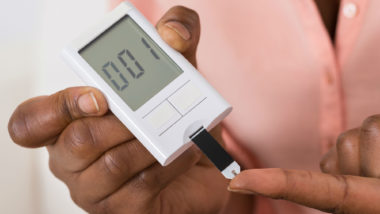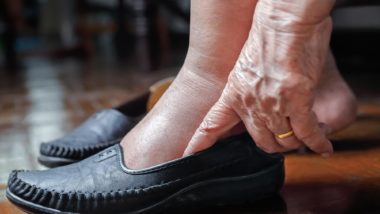Top Class Actions’s website and social media posts use affiliate links. If you make a purchase using such links, we may receive a commission, but it will not result in any additional charges to you. Please review our Affiliate Link Disclosure for more information.

An observational study published in the November 2018 issue of The BMJ found that the Jardiance amputation risk may be more than twice as high compared to patients who take a GLP1 receptor agonist instead.
Peter Ueda, MD, Ph.D. at Karolinska University Hospital in Stockholm, Sweden led the study that saw results similar to the CANVAS studies earlier this year. The CANVAS studies found an increased risk of lower limb amputation — especially the middle of the feet and toes — among patients taking another SGLT2 inhibitor, Invokana.
Ueda said he and fellow researchers analyzed registry information from Swedish and Danish health databases. The information was gleaned from patient records created between 2013 and 2016.
The amputation risk was greatest among patients who also had a history of circulation issues such as peripheral artery disease (PAD) or had undergone a previous amputation of a lower limb. Other risk factors include being overweight, male, insulin-dependent or using a dipeptidyl peptidase-4 (DPP-4) inhibitor for blood sugar regulation. A history of foot ulcers can also increase the risk of amputation because diabetes often interferes with proper, fast healing.
Ueda said patients with diabetes who are starting on SGLT2 inhibitors should be instructed to increase their physical activity and to stop smoking because both of those factors can affect the risks of amputation.
Ueda’s researchers also determined the risk of diabetic ketoacidosis also was double in the patients taking SGLT2 inhibitors.
Importance of Jardiance Amputation Risk Determination
The CANVAS study involved patients who took Invokana, but not any other SGLT2 inhibitor. The study by Ueda looked at patients who took either Farxiga or Jardiance, two other SGLT2 inhibitors that he and researchers determined increased the risk of amputations.
Thus far, the U.S. Food and Drug Administration (FDA) has not added a warning regarding Farxiga or Jardiance amputation risk.
SGLT2 inhibitors regulate blood sugar levels by sending excess sugar from the blood to the kidneys. The excess sugar is excreted through the urine instead of rerouting through the blood.
Dr. David Lam is an assistant professor of medicine, endocrinology, diabetes and bone disease at the Icahn School of Medicine at Mount Sinai in New York City. Dr. Kevin Pantalone is an endocrinologist with the Cleveland Clinic. WebMD spoke to both doctors regarding SGLT2 inhibitors and the risk of amputation.
The doctors said that patients with diabetes already suffer from impaired circulation to their legs and feet. Because SGLT2 inhibitors increase the need to urinate more often to rid the body of excess sugar, the patient can become dehydrated. A side effect of dehydration is decreased blood volume because there’s not enough moisture in the body to properly circulate the blood.
The decreased blood volume combined with already poor circulation means even more restrictive blood flow to the lower extremities. Without proper circulation, the risk of amputation increases.
Jardiance is made by Boehringer Ingelheim and Eli Lilly and was approved by the FDA in August 2014 to treat type-2 diabetes.
What is My Amputation Risk?
Patients with diabetes are already at risk of amputations due to that condition, but some users might not know that their risk increases if they are taking certain SGLT2 inhibitors. Nerve damage and poor blood circulation make diabetic patients more likely to develop foot ulcers, which is why amputation of the foot or of toes is a common concern.
Other issues can increase a patient’s likelihood of developing ulcers, including a previous history of foot ulcers, calluses, nerve damage in the feet, kidney disease, vision impairment, poor blood circulation issues, and foot deformities.
Inspecting the feet and other limbs on a daily basis will help those patients who believe they could develop an ulcer on their foot. Over time, if left unchecked, an ulcer could become a medical crisis requiring amputation.
Some of the signs of foot trouble include blisters, discolored skin, a bad odor, redness, swelling, an open sore, ingrown toenails, big ulcers, and plantar’s warts on the soles of the feet. All of these should be reported to a doctor.
What Other Risks do Jardiance Users Face?
According to Fierce Pharma, a new study of Jardiance patients also showed that the possibility of developing Fournier’s gangrene put people at risk for adverse side effects, including amputation. For that study, Jardiance and other SGLT2 inhibitor drugs increased the number of patients reporting a Fournier’s gangrene infection, a serious medical condition requiring immediate attention. This is just the latest claim to hit the makers of these SGLT2 drugs after plenty of patients have filed lawsuits over their amputated limbs.
If you or a loved one experienced diabetes amputation after taking Jardiance or Farxiga, you may have a legal claim and may be eligible to seek compensation from the drug maker for your medical and other expenses. Fill out the form on this page now to see if you qualify!
ATTORNEY ADVERTISING
Top Class Actions is a Proud Member of the American Bar Association
LEGAL INFORMATION IS NOT LEGAL ADVICE
Top Class Actions Legal Statement
©2008 – 2024 Top Class Actions® LLC
Various Trademarks held by their respective owners
This website is not intended for viewing or usage by European Union citizens.
Get Help – It’s Free
Join a Free Jardiance, Farxiga Diabetes Amputation Class Action Lawsuit Investigation
If you qualify, an attorney will contact you to discuss the details of your potential case at no charge to you.
If you took Invokana or Invokamet, you do not qualify for this investigation. Click here to join a separate class action lawsuit investigation.
PLEASE NOTE: If you want to participate in this investigation, it is imperative that you reply to the law firm if they call or email you. Failing to do so may result in you not getting signed up as a client or getting you dropped as a client.
E-mail any problems with this form to:
Questions@TopClassActions.com.
Oops! We could not locate your form.












